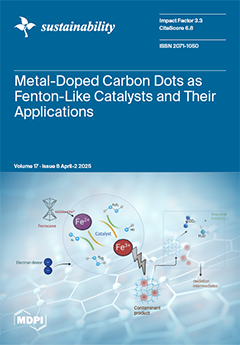Solar power generation systems, recognized for their high energy quality and environmental benefits, require efficient energy storage to ensure stable grid integration and reduce reliance on fossil fuels. Thermochemical energy storage (TCS) using metal oxides, such as the Mn
2O
3/Mn
3O
4 redox system, offers advantages like high energy density, wide temperature range, and stability, making it ideal for solar power applications. This study investigates Mn
3O
4 and Mn
2O
3 as initial reactants, analyzing reaction temperature range, rate, conversion efficiency, and cyclic performance via synchronous thermal analysis. Microstructural characterization was performed using XRD, SEM, BET, XPS, nanoparticle size, and zeta potential measurements. The results show that Mn
3O
4 reversibly converts to Mn
2O
3 with over 100% conversion efficiency over five cycles with 3.3% weight loss, indicating stable performance. Mn
3O
4 oxidation follows Arrhenius’ Law below 700 °C but deviates at higher temperatures. The oxidation mechanism function is G(α) = α and f(α) = 1, with an activation energy of 20.47 kJ/mol and a pre-exponential factor of 0.268/s. Mn
2O
3 synthesized via ammonia precipitation exhibits reversible redox behavior with 3.3% weight loss but samples from low-concentration precursors show poor cyclic performance. The reduction reaction of Mn
2O
3 has an activation energy of 249.87 kJ/mol. By investigating the Mn
2O
3/Mn
3O
4 redox system for TCS, this study advances its practical integration into solar thermal power systems and offers critical guidance for developing scalable, low-carbon energy storage technologies. These findings can support Sustainable Development Goals (SDGs) by advancing renewable energy storage technologies, reducing carbon emissions, and promoting the integration of solar power into sustainable energy grids.
Full article





